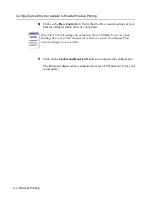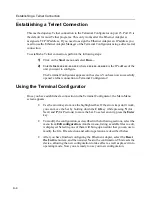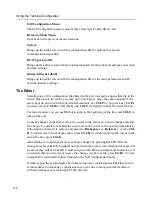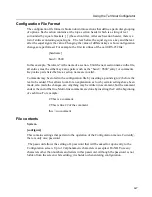
General Serial Configuration 5-5
Flow Control
Flow Control
Flow control is the process of adjusting the flow of data from one device to another to
ensure that the receiving device can handle all of the incoming data. Flow control becomes
an important factor when one of the devices is capable of transmitting data at a rate faster
than the other can receive it. There are two basic types of flow control, Hardware and
Software.
Hardware Flow Control
Hardware flow control uses dedicated signal lines to dictate transmission of data. The
options that allow you to select which pair of lines to use for this type of flow control are:
•
RTS/CTS = Request To Send/Clear To Send
•
DTR/DSR = Data Terminal Ready/Data Set Ready
Software Flow Control
Software flow control uses two special characters, called “Xon” and “Xoff”, which are
embedded in the data to turn on or off the transmission of data from the source to receiver.
In the incoming direction, flow control prevents the Ethernet Adapter from sending data
when the computer is not ready to accept it. With incoming flow control on, the Ethernet
Adapter will interpret Xon/Xoff characters in the data stream entering the serial port of the
Ethernet Adapter as flow control signals. The Xon/Xoff characters are not considered data
and therefore are absorbed by the Ethernet Adapter.
The outgoing software flow control option specifies the generation of Xon/Xoff flow
control characters by the Ethernet Adapter. The control characters are sent out the serial
port of the Ethernet Adapter and instruct the computer to start or stop sending data. This
option is used to prevent the computer from sending data when the Ethernet Adapter is not
ready to accept it.
Software flow control can have both incoming and outgoing mechanisms running
simultaneously, individually, or not at all (as is the default).
The Windows flow control setting, “Hardware,” uses the RTS/CTS pair of
flow control lines.
NOTE
















































